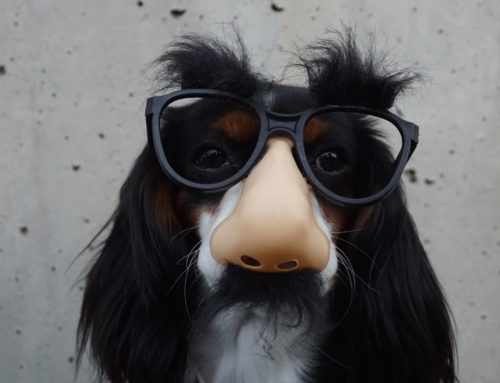One of the quintessential steps for my concept creation came from a fill-in character sheet for Dungeons & Dragons. Stuffed in a corner underneath a large section letting you describe your character’s appearance, there was a small box labeled “Personality” and beneath it in fine text were instructions that read “List 6 words to describe your character.”
Six words to completely encapsulate the essence of your entire character’s life and backstory.
It seemed sparse and inadequate. The surprising thing is how much you can say with six small words.
The power of six words
 Six words give you enough to focus on what is most important about your character’s personality and provide a big picture of who they are. It gives you three for the broad strokes and three for the contradictions that add depth. It makes you concentrate on what is essential, stripping away the superfluous and leaving only the intrinsic soul behind. Distilling the essence of your character.
Six words give you enough to focus on what is most important about your character’s personality and provide a big picture of who they are. It gives you three for the broad strokes and three for the contradictions that add depth. It makes you concentrate on what is essential, stripping away the superfluous and leaving only the intrinsic soul behind. Distilling the essence of your character.
Of course, to do this you need to know your story well enough and your characters. When you have finished your first draft, take some time to really figure out your story. Often the story you set out to create is different than the one you created. This means, along with changes in your plot, your characters will need to be changed or focused. Honing a character is not something to attempt early in your development process. It is reductive and can limit creating real and complex characters.
While editing, try distilling every character down to six adjectives. It will crystallize who each character is. This can help you to determine if characters are too similar, serving too many roles, or too ephemeral.
Sharing Traits
If characters share more than two traits, consider whether or not they are playing the same role in your story. Although family members may be similar, more than two traits describing their core may make them feel redundant in the story. Look at their purpose and see if you need both.
If you need both characters, consider ways to shift their personalities to make both feel more like individuals. Then consider where changes in the story could highlight these differences. Try to include as many differentiating moments as possible so your similar characters stand out when you have finished revisions.
Too many

If it is impossible to narrow it to six, the character may be serving too many disparate purposes in the story. Each character should have a focused role that only they can perform. The six traits should reflect and amplify this role. If you can’t get it down to six it may be because you have them performing too many roles and these need to be split into other characters.
Look at what the character is doing in the story. Can you split it into two characters? Just as a thought experiment consider what changes adding a new character will make to the story. Will it emphasize the main character’s storyline?
If you can’t split the character, consider what actions that character took that are not essential to the main plot. Can you remove any that would prune adjectives? Is there a different path to move the plot forward where the character reuses an adjective? Try to really look at what you need to make the character work.
Too few
 If you can’t manage to get to six words that aren’t synonyms, even for those pesky tertiary characters, it is likely you have a cardboard cutout instead of a real person. I often find the synonym issue when I try to hone the concept too early in character development. When the character has a richer story, other facets of their personality emerge and I need more words to incorporate them.
If you can’t manage to get to six words that aren’t synonyms, even for those pesky tertiary characters, it is likely you have a cardboard cutout instead of a real person. I often find the synonym issue when I try to hone the concept too early in character development. When the character has a richer story, other facets of their personality emerge and I need more words to incorporate them.
A good rule of thumb is if the character has a name they should have a personality. By fleshing any named character out and then honing to the six adjectives you can add nuance in even short encounters and make each person in your story feel real.
Remember there will be other adjectives that describe the character outside these six, but there should be six that identify them and are essential for the story. The cap of six then forces decisions on what is most important about the character and which traits are essential to drive the story. Anything beyond those six traits is wiggle room for edits, to rework or remove, without losing the character’s coherence.
It is amazing what you can accomplish with six words. Also, it’s hard to find an excuse to not to do this step. It is only six words.
Example:
For an example, I am going to use the three main characters of the Harry Potter series: Harry, Hermione, and Ron. The first step is simple. List adjectives that come to mind when you think of them. For me, usually two or three come fast and then I have to start thinking a little more about what makes them who they are. Keep going until you think you have it all.
Harry Potter
 Unloved orphan- more a circumstance than a trait
Unloved orphan- more a circumstance than a trait
Heroic- but how: brave, loyal, headstrong, athletic, selfless, protective, and determined.
He is also sheltered and meek early on in the story.
Inquisitive, strong-willed bordering on stubborn, and intuitive, taking correct action instinctively.
He is kind and compassionate.
On the other hand, he is hot-headed, lashing out with such fervor that even Hermione and Ron fear
his temper at times.
Unforgiving-seeking vengeance against those who he felt did him wrong
Retaliatory-He lashed out in emotional rage against those who hurt people he cared about. Both duels he initiated were in these heated moments.
Untrusting-He always feels he has to do things on his own and doesn’t turn to his friends or Dumbledore when he could. You could call this independent, but it goes beyond a positive into a negative characteristic
Suspicious-He had a very stark view, especially early on in the books, sorting people into evil and good, based on sweeping judgments. For instance, all of Slytherin was evil. Many of his suspicions turn out to be warranted, but they were before any betrayal or evil actions had occurred.
Harry’s Six

Traits
- Protective
- Brave
- Headstrong
- Untrusting
- Intuitive
- Compassionate
Hermione

Intellectual
Brave
Loyal-She is the only one of the three that sticks by the others through thick and thin throughout the books.
Just, Socially minded, rule-following. Hermione has a strong sense of justice and tries to sway others to her system of belief making her come off as high handed.
Hubristic/ Confident about her abilities and at the same time she is insecure.
Sensitive to the feelings of others as well as being sensitive to comments from those she likes or respects.
Meticulous/ perfectionistic, hard-working, tenacious, and responsible-making her the ideal academic
Compassionate-Combined with her sense of justice and sensitive nature, this trait lead her to develop S.P.E.W. and reach out to help those in need.
Blunt
Argumentative-especially with Ron
Violent- She lashed out quite a bit in a physical way against people. (slugging Malfoy, siccing a flock of birds on Ron.)
Hermione’s Six

Traits
- Loyal
- Intellectual
- Just
- Brave
- Hard-working
- Blunt
Ronald Weasley
 Loyal
Loyal
Brave
Hot-headed-Ron’s temper frequently gets the best of him
Funny- Ron’s humor is central to his character and can be cutting.
Middle-child syndrome. Underappreciated and seeking recognition
Lackadaisical- He almost makes laziness an art, depending heavily on Hermione to pass his studies.
Average-Ron’s average ability and intelligence was played up adding to the feel of the middle/ forgotten child even his circle of friends.
Friendly
Athletic
Prideful
Self-sacrificing-Without the level of recognition that Harry and Hermione receive, in a lot of ways I feel Ron sacrifices are more meaningful, but that may just be me.
Jealous
Immature-Many of his negative traits spiral out from his immaturity including his hurtful humor and his lack of desire to take responsibility.
Insensitive-He makes remarks without thinking and causes harm to those around him. This is especially true of Hermione but he also recoils from Professor Lupin when he discovers Lupin is a werewolf. It is one of the traits of the typical wizard but lacks the tact of someone who is also sensitive.
Moody
Insecure-Ron insecurity leads to problems in his life and relationships. Harry gave him the potion to calm his nerves during quiddich. Ron’s insecurity drives him to prove himself because he fears he will not be loved as much because of his average ability. Eventually, this insecurity also drives a wedge between he and Harry.
Protective
Ron’s Six

Traits
- Insensitive
- Funny
- Loyal
- Brave
- Insecure
- Lackadaisical
More than a List
In the drawn-out description, all three were brave and loyal. These are the traits that bind them as friends. They still exist as part of their character even though both didn’t make my list of six. I felt Harry’s protective nature outshined his loyalty. However, that doesn’t mean Harry wasn’t loyal. His anger often got in the way of his loyalty which is why I chose not to have it on his list. Just because you don’t include a trait in the six doesn’t mean it can’t be there. This is just a way to help focus your characters to serve a coherent role in the story.
When considering the six adjectives, think about what is driving the story forward. Without Harry’s headstrong and untrusting nature, the group may have reached out for help more often. Without Hermione’s sense of justice, she may not have gone along with the missions. Without Ron’s insecurity, he may not have bonded so closely with the others early on and the tension between the three friends later would not have occurred. The traits that drive the story forward should be on your distilled list and they should show throughout the story and not just in plot-critical events, like Ron’s insecurity.
Once you have this short-list you can look at your scenes and see that you are showing the character’s uniqueness through their reactions and actions. You can check if you are showing the traits you intend to and make sure their weaknesses or misbeliefs are highlighted. With each editing pass, the adjectives that make it to the top six could change. Remember character development is as fluid as the rest of the process. If you need to change who the character is you can. Just make sure the story reflects this.
Photo Credits
Main image- Snowflakes by Aaron Burden, modified: resized to banner width
Six by Ines Hegedus-Garcia
Sisters by Eye for Ebony
Over-reaching by Cristian Newman
Mannequin by Rene Böhmer
Harry Potter by Rae Tian
Round Glasses by Mag Pole
Lost in the Woods by Taylor Bryant
Books by Kurt:S
It’s Your Move by Dustin Gaffke, modified: cropped
Pet Rat by freestocks.org
Change by Peder Cho
Learn more about publishing and craft by checking out other blogs in the monthly Author Toolbox Blog Hop created by the indomitable Raimey Gallant. 







Excellent, well-thought post. My novels have suffered from too many characters. I’m getting better, but far from good. I liked your point about overlapping characteristics and indicating one of the characters may not be needed. I do maintain a list of my characters and their traits as I write to ensure consistency. It helps. I find writing short stories also helps me focus on character development. There are fewer characters and less space to build them.
This is a very interesting exercise. In many ways I like the idea of taking each word and giving it an additional 6-12 words to define/qualify it, while still retaining this separate “here is their basic core”. I definitely think you’re right that there should be something that binds two or more characters together, but mostly they are defined through contrast. In any group/cast the common attributes tend to fade into the background, and whatever is either unique or most pronounced comes to define the character.
Definitely a good “proof of concept” on the relationships between characters, or a way of figuring out how a larger group (like 6 or 9 characters), might fragment into 2s and 3s.
This is another good way of analyzing a story and understanding how the story makes specific relationships feel so natural.
Okay, so I’ve never done this, but now that you’ve laid it out so eloquently, I’m thinking I darn well should have. Whoops! Great post. 🙂
There is always something new to try the might help improve a story. Thanks for sharing your technique. I’ll have to give it a try.
I love the 6 words idea. I am going to do this for all of my main characters now, Fun! 🙂
“While editing, try distilling every character down to six adjectives. It will crystallize who each character is. This can help you to determine if characters are too similar, serving too many roles, or too ephemeral.” This s brilliant. Every time I find a novel with too many characters, it comes back to this problem: they are too similar. Great Tip!
You always have great information to share, Erika. Thanks so much for this. Each character in a story must be necessary to move the plot problem forward. Each character needs to be distinct and fully fleshed out. I’ve shared this online. Thanks for sharing your insight
Great post Erika. I love how you explain the purpose and then walk us through a specific example. I love working on character outlines this exercise will certainly help me. Thank you for your thoughtful post 🙂
A unique way to look at your characters. I especially like the way certain traits overlap between characters and can both bind them and cause friction. I’ll be using this exercise. Thanks!
I’ve been worried that some of my characters are too similar, and here is this great fix! Thank you. Your website is just stunning, too.
This is just a phenomenal post! It’s an idea that I’m going to try to hold onto when I get to the editing portion of my novel – I feel like this could really help lock on to the specific problems with muddy characters.
Great post! I love that you used Harry, Hermione and Ron to illustrate your points. I’ll have to try this out with my characters, especially to avoid the problem of having cardboard cutouts. Thank you for sharing!
This is a brilliant post. I love it and will start trying this out with characters.
What a unique way of using numbers to define and develop characters! I especially liked how you used numbers to identify problem areas of one character having too many or too few traits or two characters having too many similar traits. I am definitely using this as a test for my characters. Thanks for sharing!
Great post. Love the six word idea — I’m definitely going to try it!
This is a great way to work out characters, I never thought of doing this! I’m definitely going to use this technique in the future. Thank you for introducing me to it.
Interesting take on characters. I tend not to label anyone and see them as growing changing people. Part of the arc and all that. But I do get what you mean. 🙂
Anna from elements of emaginette
Wow! What a great post. I never thought about giving my characters 6 one-word characteristics. I’m definitely gonna do that and see where it takes me. Very scary. I also like the way you showed that some characters may have too many overlapping traits. Surely readers need to distinguish the characters and if they’re all alike, that won’t happen. Thanks for this wonderful guideline and a good test that all writers can use.
This a great exercise! I’m going to have to try it with the characters in my WIP. Thanks for sharing!
Great post!! But couldn’t save it to my writing board in Pinterest because there’s no Pinterest image. Something you may want to consider for future… Anyway, thank you for this. I’d love to chat about whether you might be willing to convert this into a presentation for SJWG.
[…] character and which of their traits are essential for your story. Once you have your trait list, determine which traits are the most important to give a feel for who your character is and which traits are critical to highlight at their […]
Great ideas on how to develop characters. Thank you for sharing!